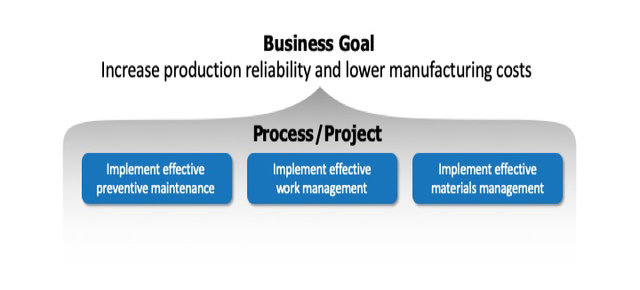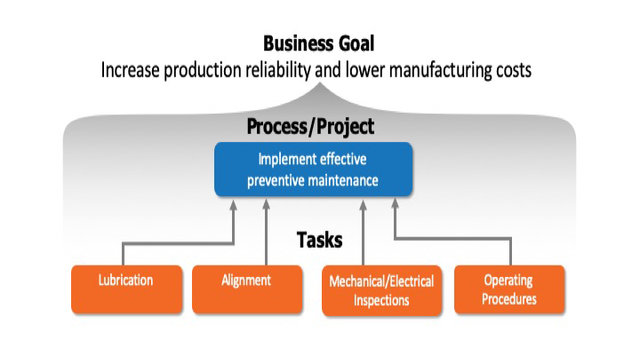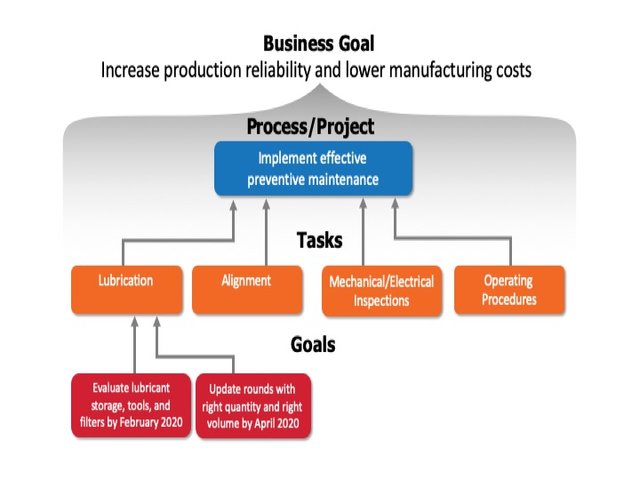COMPANY INSIGHT
Sponsored by Torbjörn Idhammar, President IDCON INC, a Reliability and Maintenance Management consulting firm
Practical Implementation of Production Reliability
If you want to improve production reliability in one or more facilities, it is important to have a clear picture of the goal(s). At first glance, this may seem as a given, but ask yourself some questions or perform self-analysis by asking people at your plant:
- Does our facility have an understandable, simple vision of what production reliability is?
- Do we have clear and practical goals for improving production reliability that the employees understand?
- If you ask 10 employees what our goals for production reliability are, will you get similar answers from everyone, including production, maintenance and engineering?
- Does the goal have an execution date? Goals without dates are a wish list.
Designing a vision and goals that can be communicated and understood is not easy. There are many ideas on how it can be accomplished. I’ll share my own experiences that I've seen work. At IDCON, we follow some guidelines when we set up goal images, they are:
- Big words in the goal images must be linked to practical actions that can be documented in an implementation plan and understood by all employees.
- You must separate goals and activities. A goal may simply be to perform an activity, so it can easily get cluttered.
- Goals should always have an end date and a person responsible.
- It's good if goals can be measured objectively.
How many goals should I have?
You should not have more than 2-3 overall goals and these 2-3 production reliability goals are usually identical for ALL manufacturing or processing plants.
If you have more than 3 goals, experience has shown, that you cannot remember the goals and you lose focus on what's important. For example, if your organization has 7 goals, how do you as an employee know which one is most important? What is the focus?
It is important that production reliability goals fit with the organization's overall goals. Hopefully, the overall goals are clear. If they are not, then you can fall back on the goal, which is true for any company, to generate profit.
For production reliability and maintenance, the long-term goal for most organizations is to:
- Increase production reliability
- Reduce total costs/production unit
Note, in my opinion, maintenance costs/production unit is very uninteresting. Total cost/production unit is a company's competitiveness. That's why in this context we at IDCON stubbornly use the word "production reliability" and not "availability," since "availability" usually refers to machine availability and ignores other production problems. Production reliability is a group effort between operation, maintenance and construction.
Goals with the pyramid method
The two goals above are large goal images. How do we connect these goals to activities? We recommend a pyramid format. Ask the question, “what processes help us increase production reliability?” What do you think will reduce downtime and reduce long-term costs?
Effective responses may be, for example:
- Processing and Scheduling (such as: % rush jobs, for example)
- Preventive maintenance (such as: quality + performance %)
- Spare parts inventory (such as: value + service rate %)
- Cause analysis (such as: value of solved problem)
- Knowledgeable repair workers (such as number of recurring errors)
Then we have an image that looks like this:

Image 1: Example of how the first levels of the definition of goal images for production reliability.
If we continue to take "preventative maintenance" in the image above as an example, PM can be effectively divided into:
• Inspections (Mechanical and Electrical inspections)
• Instrument loop inspections
• Instrument calibration and physical inspection
• Lubrication
• Alignment
• Balancing
• Operation method
• Cleaning

Image 2: The second level example. Note not all Preventive Maintenance tasks are shown.
If we continue with, for example, lubrication, a goal could be:
- Goal: All equipment has the right amount and right degree of cleanliness of oil/grease
- Measure: Can be partly measured by analyzing a number of randomly selected bearings and seeing how many have the proper documentation (Quantity, type). Can be subjectively evaluated by evaluating lubricant storage, lubricant tools, filters and logic in the choice of cleanliness requirements.
The image now looks like this:

Image 3: Example of a goal pyramid with tasks and goals identified. Note how the Goals have specific dates.
Goals must be connected to activities and people with deadlines
Each employee probably has a conference with the relevant manager. In this conversation, you usually come together on the activities and goals each employee will work on or is responsible for by the execution date. When we document the activities, the employee is asked to connect the activities in question to the goal image the company has for production reliability. It takes time to put the system together, but in my experience, it gets faster each year and is easy to update, since the higher goals in production reliability and maintenance hardly change, only the 2-3 lower levels change.
By using a simple pyramid, we have now linked an activity (Task), improving documentation of lubrication rounds, to the overall goal of manufacturing costs.
Working method for designing goals?
Not only must management determine the prioritization of major initiatives, but also must get other personnel to believe, or at least accept, the initiative management starts. One approach that works is for management to determine initiatives down to level 2 or 3, then allow the work group to take over and determine other levels.
Does your organization need help to designing your reliability and maintenance vision and goals? Give us a call or email us.